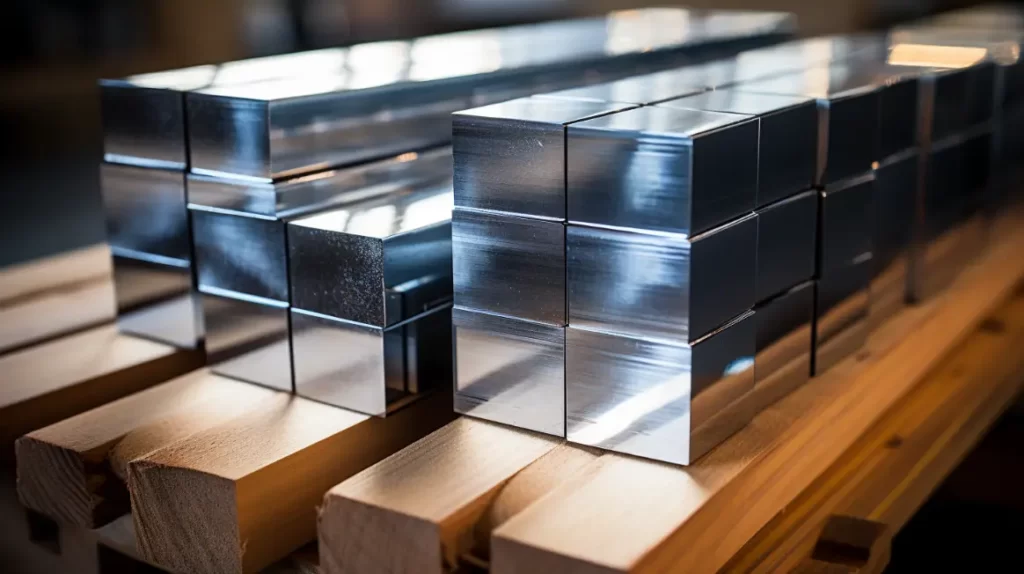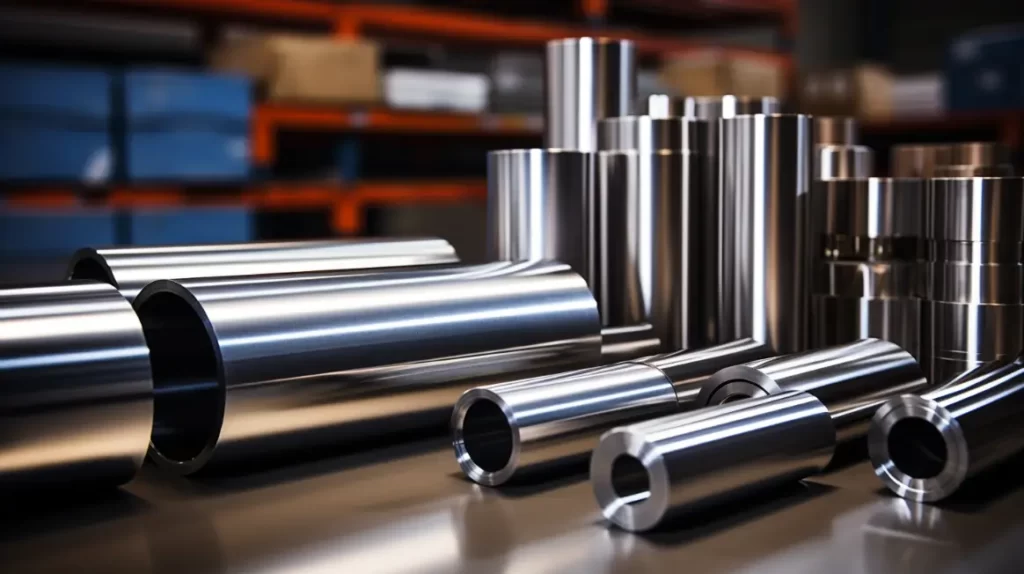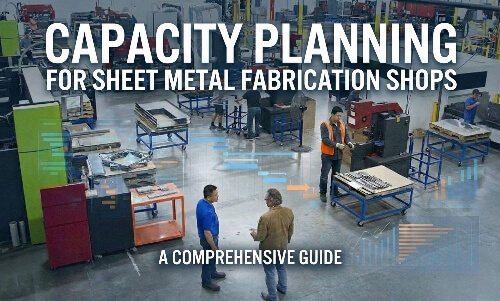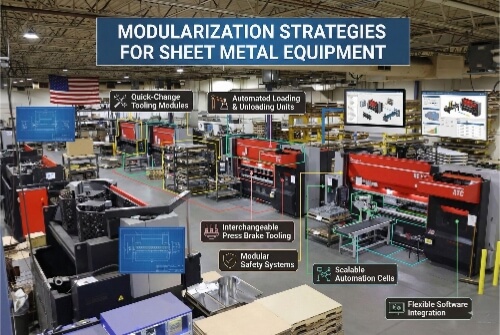When you’re working on a new product or part, choosing the right metal can be frustrating. Mild steel is cheaper. Stainless steel resists rust. Many buyers and engineers face this issue when starting a job. In this post, we’ll help you figure out which steel works best for your application.
Mild steel and stainless steel differ in key ways like corrosion resistance, strength, cost, and application. Mild steel is strong and affordable but rusts easily. Stainless steel resists corrosion and looks better, but it costs more. The best choice depends on your project’s environment, budget, and performance needs.
Steel looks simple, but each type has its pros and cons. Let’s explore these metals in detail to help you pick the right one.

What Is Mild Steel?
Mild steel is a type of carbon steel with a low amount of carbon. Mild steel is mostly iron, with about 0.05% to 0.25% carbon. It does not have extra metals like chromium or nickel.
This low carbon content makes mild steel flexible and easy to weld or cut. It is strong enough for structural parts but rusts quickly without protection.
Common Forms and Grades
You can get mild steel in many shapes, such as sheets, plates, tubes, bars, and structural beams.
The most common grades are:
- A36: widely used in structural applications like frames and supports.
- 1018: a better choice for precision parts due to its tight tolerances and smooth finish.
- 1020: used in automotive parts and machinery due to its good machinability.
- Q235: General purpose steel common in Asia. Q235 offers good weldability at a lower cost.

What Is Stainless Steel?
Stainless steel is made of iron mixed with at least 10.5% chromium. This chromium forms a thin film on the surface that blocks moisture and air. That layer keeps the metal from rusting or staining. Some types of stainless steel also include nickel, molybdenum, or other elements to improve strength or corrosion resistance.
Stainless steel is strong, hard, and easy to clean. It also keeps its shape under heat and pressure. But it’s harder to machine than mild steel. It also costs more. Still, for projects exposed to water or chemicals, it often lasts longer.
Different Types of Stainless Steel
There are many types of stainless steel, but these are the most common:
- 304 Stainless Steel: This is the most widely used. It has 18% chromium and 8% nickel. It resists corrosion well and is easy to form and weld. It’s found in sinks, cookware, and building panels.
- 316 Stainless Steel: This type includes molybdenum, which improves its resistance to salt and harsh chemicals. It’s used in marine hardware, food processing, and chemical tanks.
- 430 Stainless Steel: This is a lower-cost option with less corrosion resistance. It’s often used in home appliances and decorative trim.
- 410 Stainless Steel: This type is hard and strong but less corrosion-resistant. It’s used for tools, fasteners, and valves.

What’s the Difference Between Mild Steel and Stainless Steel?
These two steels may look similar, but they perform very differently. Let’s compare their strength, resistance, and working ease.
Strength and Durability
Mild steel and stainless steel both offer good strength. However, their performance depends on the specific type and use case.
Tensile Strength Comparison
Tensile strength shows how much a material can stretch before breaking. Stainless steel has higher tensile strength than mild steel.
For example, 304 stainless steel reaches around 505 MPa. Mild steel usually stays between 350–400 MPa. That means stainless steel can handle more pulling force without breaking.
Yield Strength and Load Capacity
Yield strength is when the metal starts to bend and won’t return to its shape. Stainless steel again leads here. It can carry heavier loads without bending.
Mild steel has a yield strength of around 250 MPa. Stainless steel, like 304, is usually around 200–300 MPa, but cold-working can raise it.
Impact Resistance and Fatigue Life
Mild steel handles shock and vibration better. It bends before it breaks, which is useful for impact or heavy-load parts.
Stainless steel is harder. It resists wear but can crack under long, repeated stress. In high-vibration jobs, mild steel might last longer unless corrosion is a concern.
Corrosion Resistance
This is where stainless steel wins. Its chromium layer protects it from rust, even in wet or salty air. That makes it ideal for outdoor or marine use.
Mild steel rusts fast without a coating. Paint, powder coating, or galvanizing can help. But these wear off over time and need maintenance.
Fabrication and Machinability
Mild steel is easier to cut, weld, drill, and bend. It’s soft and friendly to machines and tools.
Stainless steel is tougher. It wears tools faster and needs more care when welding. Some grades warp from heat, or work hardens quickly. This can slow down production.
Weight and Density
Both metals have similar weights. Mild steel is about 7.85 g/cm³. Stainless steel is around 7.93 g/cm³. That’s a small difference. For most parts, weight won’t be the deciding factor.
Cost
Mild steel is much cheaper. It’s widely available and costs less to work with. This makes it great for large builds or cost-sensitive projects.
Stainless steel costs more upfront. You also spend more on cutting, welding, and finishing. But it pays off in long-term performance and less maintenance.
Applications and Industry Use
Different environments call for different metals. Mild steel and stainless steel each serve unique roles across industries.
Where Is Mild Steel Commonly Used?
Mild steel is strong, easy to shape, and low in cost. That makes it a go-to material for many large-scale or cost-sensitive applications.
Construction, Automotive Frames, General Fabrication
In construction, mild steel is used for beams, frames, and rebar. It supports buildings, bridges, and infrastructure.
In the automotive industry, it’s found in car frames, brackets, and engine parts.
Shops use it in general fabrication for brackets, housings, and custom metal parts.
People use it in applications requiring magnetic properties, such as electric motors and transformers.
Where Stainless Steel Is Commonly Used?
Stainless steel handles moisture, chemicals, and heat without corroding. It’s the first choice for industries that need clean, rust-free surfaces.
Food Processing, Medical, Marine, Architecture
In food processing, stainless steel is used for sinks, counters, tanks, and piping. It’s safe, easy to clean, and resists bacteria growth.
Medical tools and equipment use stainless steel for its durability and hygiene. Surgical instruments, trays, and hospital fixtures are common examples.
Marine uses include boat parts, docks, and underwater equipment. 316 stainless steel is especially good in saltwater.
In architecture, stainless steel is chosen for its sleek look and long life. It’s used in railings, facades, and decorative panels.
Mild Steel vs Stainless Steel: Quick Side-by-Side Comparison
Choosing the right material depends on several factors. Here’s a simple table that highlights the key differences between mild steel and stainless steel to help you decide faster.
| Property | Mild Steel | Stainless Steel |
|---|---|---|
| Composition | Iron + <0.25% carbon | Iron + ≥10.5% chromium (often with nickel, molybdenum) |
| Tensile Strength | 400–550 MPa (e.g., A36) | 520–750 MPa (e.g., 304), higher in some grades |
| Yield Strength | 250 MPa | 200–300 MPa, higher when cold-worked |
| Impact Resistance | Good | Very good, especially in high-nickel grades |
| Corrosion Resistance | Low (needs coating or paint) | High (inherent, especially 316 in harsh environments) |
| Machinability | Easy to cut, weld, and form | Harder to machine and weld, needs care |
| Density | 7.85 g/cm³ | 7.93 g/cm³ |
| Surface Finish | Dull, needs painting | Shiny, clean, attractive surface |
| Cost | Low | Higher upfront cost |
| Common Uses | Frames, beams, brackets, general fabrication | Food, medical, marine, architecture |
| Rust Resistance | Poor without protection | Excellent, even when scratched |
| Lifespan in Harsh Envs. | Short unless protected | Long, especially in wet or chemical settings |
Mild Steel vs Stainless Steel: Which One Should You Choose?
Each metal fits different project needs. Choosing the right one depends on your environment, budget, and performance goals.
When to Choose Mild Steel?
Choose mild steel if your project needs strength at a low cost. It’s a good choice for structural frames, brackets, or parts that won’t face moisture or chemicals.
If the metal is painted or powder coated, mild steel can last a long time. It’s also easier and cheaper to machine, weld, and shape.
For high-volume jobs or cost-sensitive parts, mild steel is often the better option.
When to Choose Stainless Steel?
Go with stainless steel if your parts need to resist rust, heat, or chemicals. It works best in kitchens, hospitals, marine settings, or outdoor environments.
If the part must look clean and shiny or be easy to sanitize, stainless is the better choice. It’s also better for products that will face repeated washing or moisture.
Though it costs more upfront, it often lasts longer and reduces maintenance costs.
Conclusion
Mild steel and stainless steel serve different needs. Mild steel is strong, easy to work with, and cost-effective. It’s ideal for general structures and low-corrosion areas. Stainless steel resists rust, lasts longer, and looks cleaner. It’s better for harsh environments or products that need a polished finish.
Still unsure which metal fits your project? Contact our engineering team today for expert advice and a fast quote tailored to your application.
Hey, I'm Kevin Lee

For the past 10 years, I’ve been immersed in various forms of sheet metal fabrication, sharing cool insights here from my experiences across diverse workshops.
Get in touch

Kevin Lee
I have over ten years of professional experience in sheet metal fabrication, specializing in laser cutting, bending, welding, and surface treatment techniques. As the Technical Director at Shengen, I am committed to solving complex manufacturing challenges and driving innovation and quality in each project.



